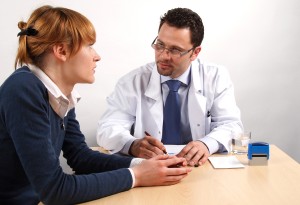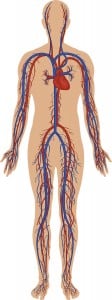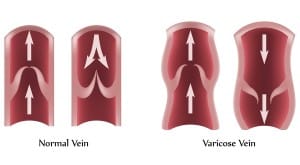Before you have your first vein treatment consultation, it is important that you have an idea of what to expect. Your consultation is a great place for you to get details, but you do not want to go into it blindly. Because of this, we have the details about what you can expect at your vein treatment appointment. Here, you should address the following at your vein treatment consultation: a discussion about your medical history, an examination, and realistic expectations in regard to your results.
Vein Treatment Consultation Overview:
 1. Discussion of Medical History
1. Discussion of Medical History
In order for your vein treatment specialists to grasp an understanding of your unique vein treatment needs, a thorough discussion of your medical history needs to be covered. Unfortunately, a number of vein-related issues, such as spider veins and varicose veins, are hereditary and based on your genetic makeup. Factors like your sex, age, and health conditions, such as pregnancy, can affect certain vein conditions. Disclosing this information is crucial to successful vein treatment, so be sure to include all the details.
2. Vein Treatment Examination
Vein treatment examinations are not limited to the analysis of your veins. This consultation entails the examination of your arteries, too. Why? It is not unusual for vein and artery changes to occur simultaneously. Throughout your vein treatment consultation, you can expect your physician to take an in-depth approach to the assessment of your veins. For an accurate overview, you can expect to move into a series of standing and sitting positions. Believe it or not, moving from a sitting to standing position can sometimes have a huge impact on the valves of your veins.
3. Vein Treatment Expectations
After your medical history has been discussed and your vein treatment specialist has completed a thorough vein analysis, it is important that you discuss your vein treatment expectations. Why? It is crucial that you know that while many vein complications can be treated, this does not mean your condition will be cured. If your vein issue is genetic, it’s likely that spider or varicose veins will return over time. Because of this, it is important that patients enter vein treatment with realistic expectations.
Now that you have an idea of what you can expect during your vein treatment consultation, schedule your appointment today. Do you have problem veins that need the attention of vein treatment specialists? Summit Skin & Vein Care of Lee’s Summit, MO, can help.
To learn about our vein treatment services, contact Summit Skin & Vein Care at (816) 533-4398, and do not forget to ask about our free quick vein check.
Summit Skin & Vein Care is proudly serving Lee’s Summit, Raytown, Independence, Blue Springs, Harrisonville, Warrensburg, Clinton, MO, and their surrounding areas.

